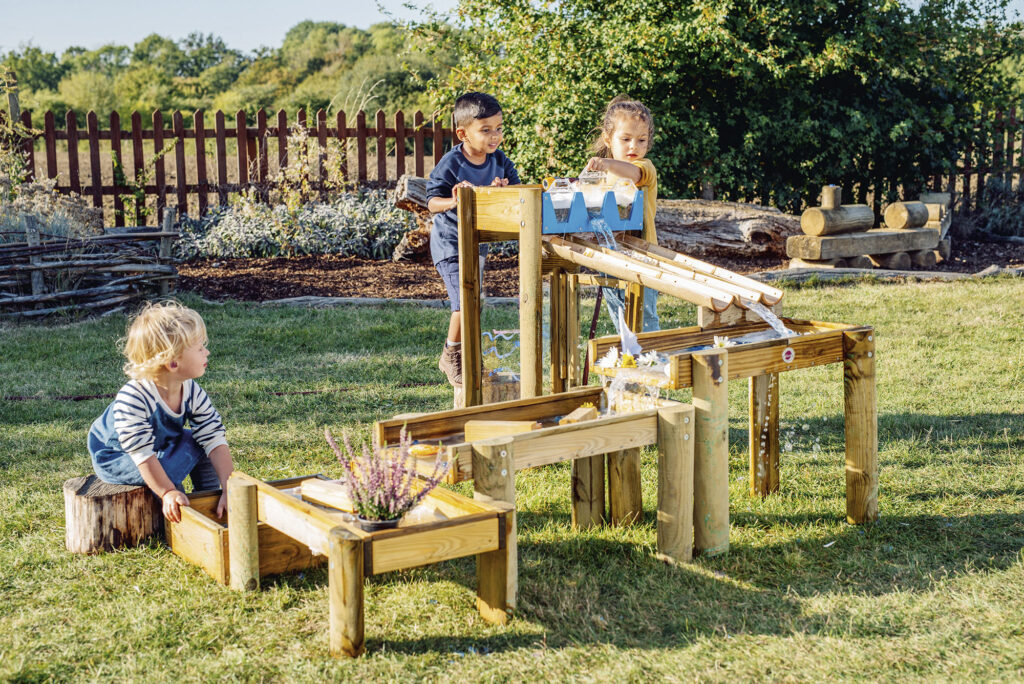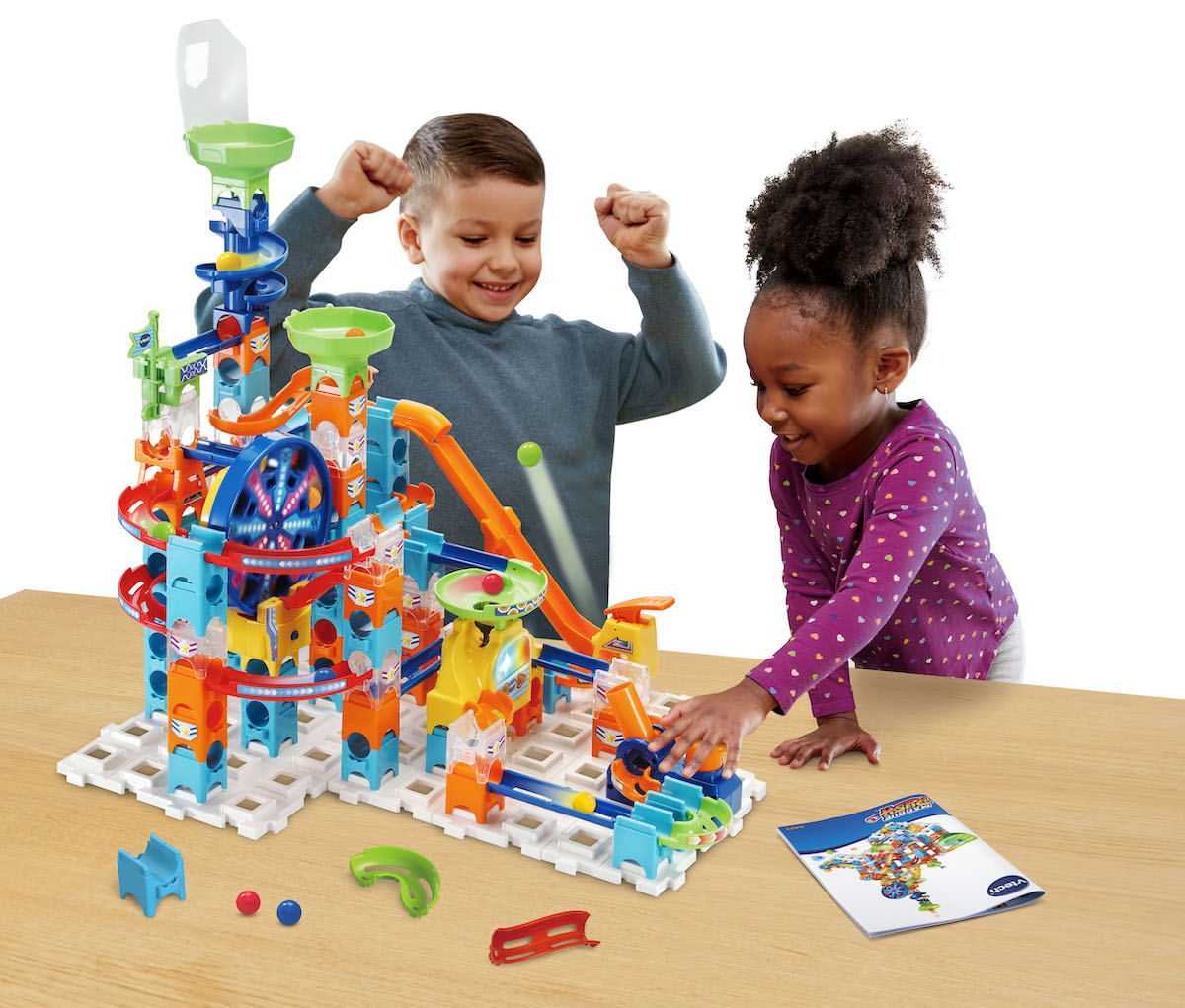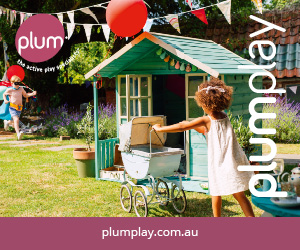Media kindly brought to you by Plum Play
It’s easy to underestimate how humble sand and water can play a big role in your child’s grasp of basic science and creative expression that help them make sense of the world. The feeling of sand and water between their toes during a family outing to the beach is just the beginning of a sensory learning process that holds the key to their understanding. Parents are encouraged to make sand and water play a frequent, ongoing activity for their child, as these natural resources form a perfect pairing to support early STEM/STEAM (science, technology, engineering, arts and maths) education.
So, what does sand and water play actually teach kids? From a science perspective, gravity, measurement, volume (full versus empty), weight, buoyancy (sink vs float) and motion, are all addressed, and on the arts spectrum, it nurtures creativity, literacy and sociability. It’s no surprise then that child education experts sing its praises: “Sand and water play are two staple sensory activities that should be found in every early years environment due to the huge myriad of learning opportunities they offer” (source).
The experiences you give your little one now, could shape their engagement with science, the arts and the natural world, for years to come. It’s why Plum Play, the Active Play Specialists, developed their popular range of activity tables and the newly released Discovery® Forest Water Run, to support this important form of sensory play. With their help, let’s explore the methods in which you can engage your child in early STEAM education through sand and water, while having a mountain of fun!
Introducing kids to STEAM concepts in a practical way
You may be surprised to learn that “research suggests that by the age of 7, most children have developed either a positive or negative attitude towards science education that will remain entrenched” (source). It certainly makes the case for starting early! Kids and even babies have an instinct to experiment, so it’s just a matter of harnessing it at an age-appropriate level.
People tend to learn quicker and more easily through hands-on, practical learning where applicable, but it is especially true for children who have not yet developed advanced cognition and reasoning. Hands-on learning allows them to form a hypothesis or expectation about what is going to happen, and then watch it play out. For instance, if you tried asking a young child in a dry sandpit to build a ‘tower’ of sand, they would try, but struggle to make anything higher than a small mound as it collapsed upon them. But present a source of water, and through a trial-and-error process, they will eventually realise that mixing water with the sand is the only way to make sand ‘stand tall’ and construct 3-dimensional shapes.
Sand and water play activities allow children to make the following important discoveries:
- Water adds weight to sand, making it heavier and able to be compacted
- The texture of sand changes as you apply water and let it return to a dry state.
- Sand and water can be moved by varying levels of air pressure
- Water is affected by gravity and will always run downhill
- Water is a liquid because it pours
- Water takes the shape of any vessel it is poured into
- Water can turn from a liquid to a solid and vice versa, with hot vs cold temperatures.
- Certain items sink in water, while others float.
How to approach sand and water play to support STEAM learning
As we have explored above, it’s not enough to describe the theory behind STEAM concepts to children – active participation is the key to their understanding. Thankfully, water and sand play is an uncomplicated and inexpensive activity, and you can create the conditions of a ‘lab’ or ‘studio’ for kids at home quite easily! Aside from the star ingredients of sand and water, all they’ll need are some utensils and a generous sprinkling of imagination. While there are no set rules, there are 2 important things for parents to keep firmly in mind when supporting early STEAM education.
- The process is more important than the results: Ensuring kids always arrive at the ‘right answer’ is not the primary objective of STEM-based play. As long as they are acting on their curiosity and continuing to experiment through trial and error, then it’s been a success.
- Prioritise child-led discovery: Avoid the temptation to intervene too heavily in your child’s STEAM play. For instance, once you set up the basic framework of an activity, let them fill in the gaps and own the experience. By all means, try to extend children’s thinking process – especially if they look like they’re struggling – by asking action-led questions such as “what will happen if we do ‘x’?”, but you also need to let them self-direct to tap into and grow their creativity and problem-solving capacity.
(source)
While backyard roaming has its time and place (see our advice for nature-based play), kids will benefit from a dedicated play space they can make their own. Understanding the value of self-directed play, Plum Play’s popular range of activity tables are designed to provide just enough structure, but an otherwise blank canvas, for kids to explore, experiment and create. Made from quality, natural pine and offering storage options that parents will appreciate when it comes to setup and pack-up time, families can make sand and water (or other sensory play) an ongoing tradition at home.

Sand and water activities to try
So how can you specifically help sand and water ‘come alive’ for children? Mindful of the need to let their own imagination guide play, parents and caregivers can positively shape this by introducing elements for kids to incorporate. Children have a natural instinct to tip, pour and fill, so make sure their toolkit includes: cups and containers of varying sizes including a sieve or something with holes, utensils such as spades/spoons/ladles, different objects that will sink or float, and natural elements such as pebbles, flowers and leaves.
Here are just a handful of ideas to ensure a well-rounded STEAM experience.
- To test porosity aka ‘empty space’ within an item, get your child to submerge sponges, and cloth or paper towels in water and then squeeze them out, to determine which materials hold the most water.
- To test viscosity aka ‘resistance to pouring’, get your child to mix different amounts of sand with water (and later, other substances) and pour from different heights and angles to observe gravity and speed of motion.
- To teach density aka mass or weight, get kids to blow through a straw to see how quickly air can move dry sand away compared to wet, compounded sand
- Get kids to colour sand and water with natural food dyes (closely supervised!) to get familiar with the colour spectrum and forge different patterns.
- Encourage themed play by adding characters/figurines and props to their play space (think underwater kingdom, pirates on the high seas, etc.) to enhance literacy and social and emotional development.

A perfect gift for the holiday season – Discovery Forest Water Run
If you’re seeking to maximise your child’s engagement with STEAM learning including motion, check out Plum Play’s Discovery® Forest Water Run – an exciting reimagining of the traditional activity table or ‘water run’. Composed of 3 levels and 5 individual wooden reservoirs to create the ‘run’, it is powered by a hosepipe attachment which sits at the top, to ensure a constant flow of water.
Suited to kids aged 3+ years, they’ll love controlling the 3-way racing gates, which can be operated at different heights to regulate flow. Watch as the water floods the natural bamboo racing chutes into the below reservoirs, then begin the race all over again! Not only will they get their fill of sensory fun, they’ll also get closer to grasping the rules of physics we discussed at the beginning: motion, gravity, measurement, volume (full versus empty), weight, buoyancy (sink vs float) and motion.
Why kids (and parents) will love the Plum Play Discovery Forest Water Run:
- 3 level water run with 5 individual wooden reservoirs which join together
- Natural bamboo racing chutes
- Three-way water racing gates can be opened and closed to different heights to regulate flow and water direction; allow children to race and play together
- The structure can be reconfigured to optimise space and change the water flow
- Transparent gates have level markers that allow children to see and measure changing water levels
- Easy to use ergonomic hand grips are specifically designed for small children
- 2-in-1 step and storage box
- Children can get even more creative by using the easy clean painting screen to map out their races and keep score.
- Wooden blocks to change and stop water flow
- Water cascade for added sensory play
Learn more and explore the full Plum Play range on their website.









